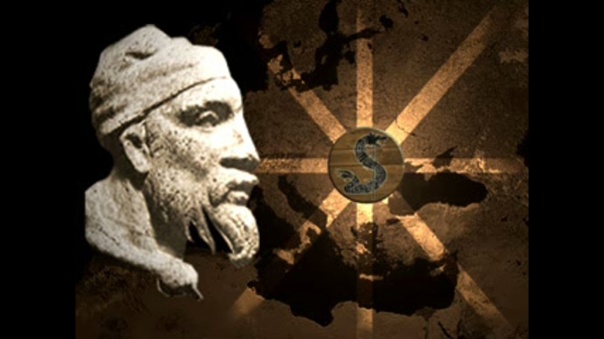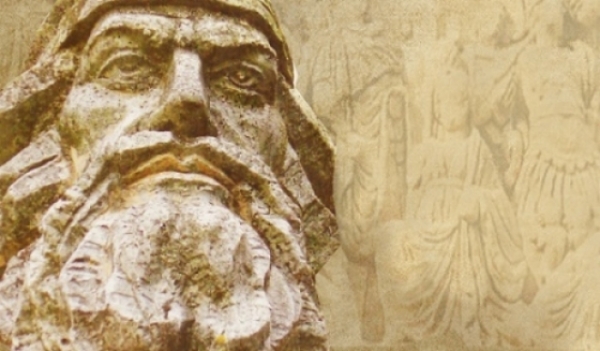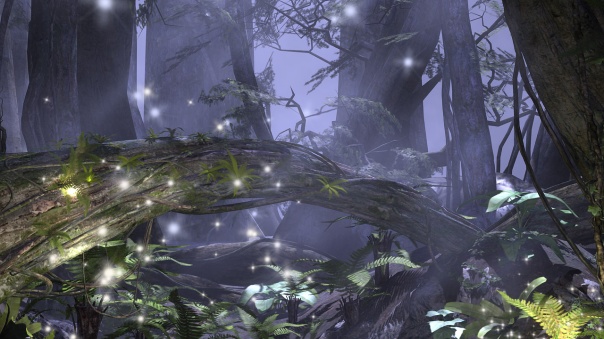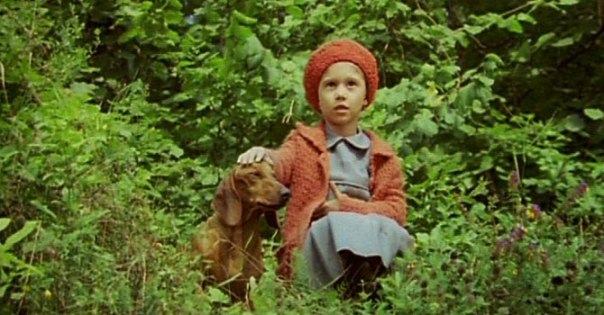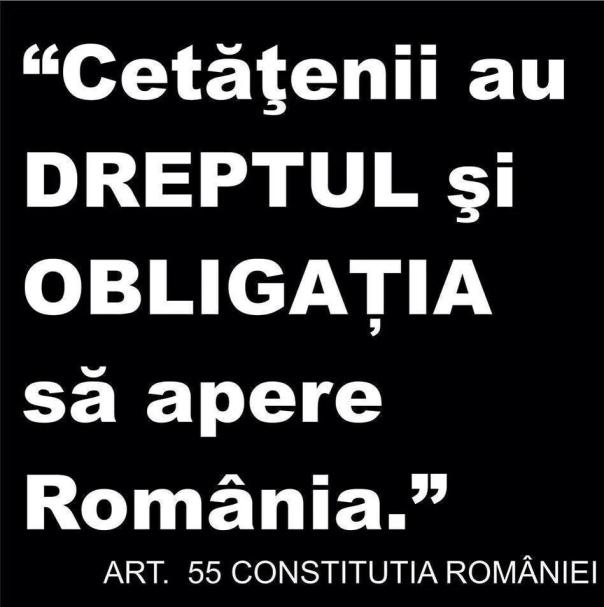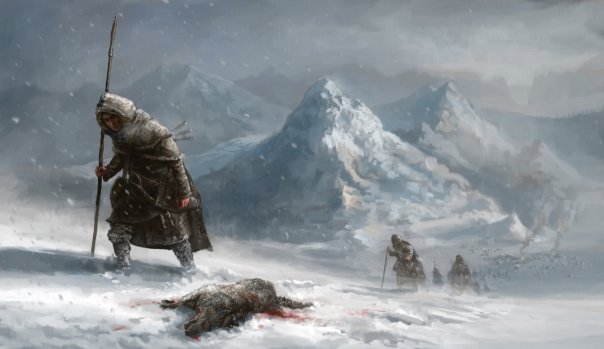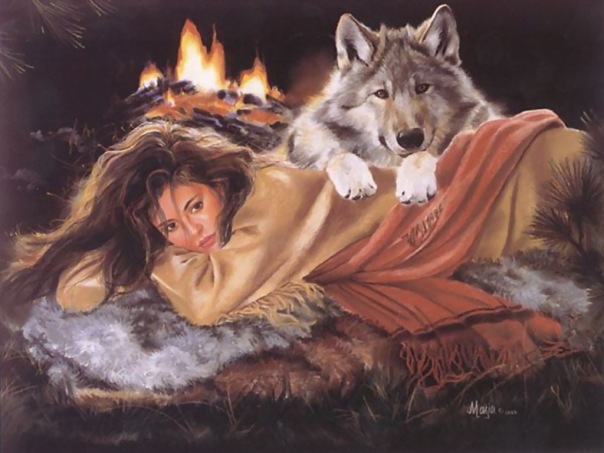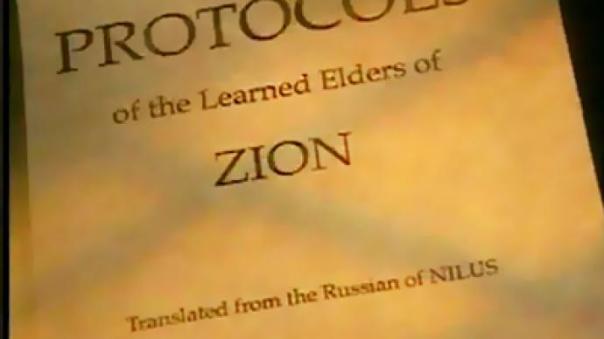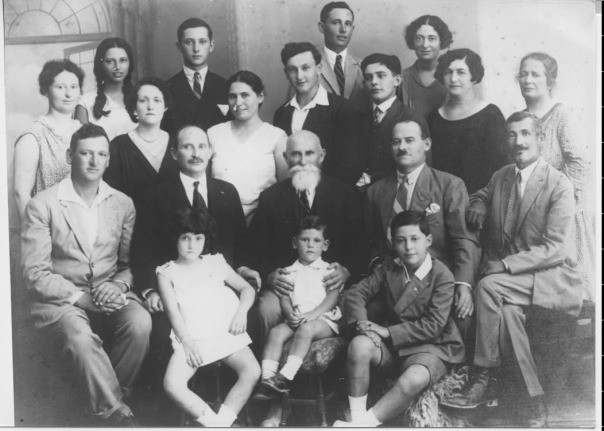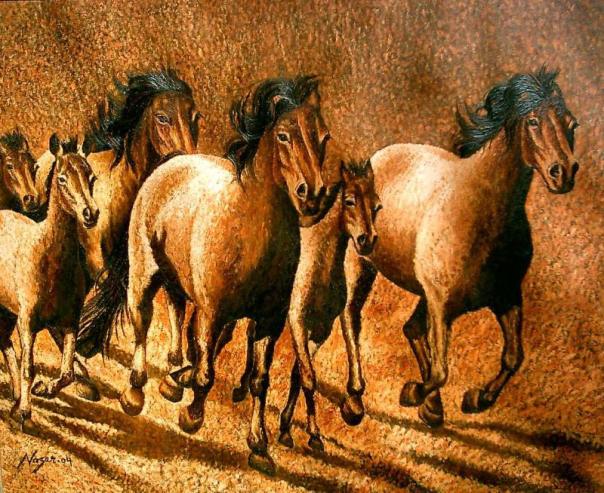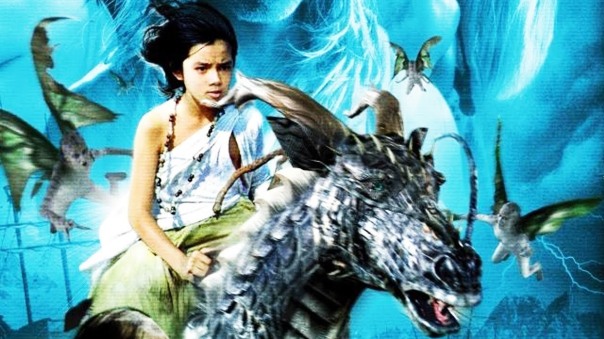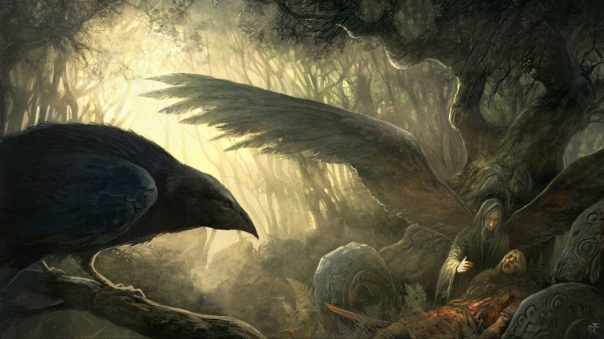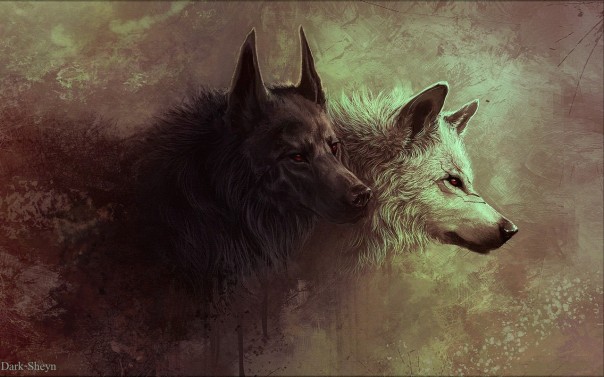Author Archives: Darkest Heart
BIBLIA -APOCALIPSA –ARMAGHEDONUL
~
~
English Translation Below
BIBLIA -APOCALISA –ARMAGHEDONUL V-ati pus vreodata intrebarea ce vor sa ne spuna biblia si cei care au scris-o …evreii ? de fapt nu vor sa ne spuna noua ci este un averstisment pentru urmasi despre un real pericol ce vine din Carpati . Apocalipsa este de fapt o anagrama = apoca lipsa … in limba vorbita vocalele se pot schimba ..asa ca rezulta apocalipsa = apuca lipsa =apuca-i lipsa Fiara ce se va ridica din cetatea celor 7 coline si purtand numarul 666, iar lupta va fi pornita din Armaghedon . ARMAGHEDON = ARGHEDAVON una din cetatile de baza a lui Burebista si situata intr-o zona cu 7 dealuri . Cand Burebista pleca la lupta din aceasta cetate avea un scut pe care era desenat un Dragon …adica fiara, balaurul ! 666 nu este satanic ci 555 ! 6 este numarul civilizatiei umane ..apa cea care mentine viata si o regasim in proportie de 75% in corpul uman, are celula din 6 laturi iar unele celule din corpul Oamenilor au 6 laturi . fagurele facut de albina are 6 laturi … deci cum poate sa fie 6 satanic ? da poate sa fie pentru cei care nu apartin civilizatiei umane . DE CE PERICOL pentru evrei ce traiau pe atunci si apoi si pentru urmasii lor ? pentru ca pe teritoriul Daciei a fost leaganul civilizatiilor, strabunii stiau de evrei si planurile lor si mai ales de sionisti….. adica tribul iudaic ce are pretentia sa conduca lumea pentru ca ei sunt alesii …stramosii au creat unitati de lupta impotriva acestora regasite mai tarziu in multe zone din europa … Ordinul Dragonilor din care a facut parte vlad dracul tatal lui tepes si a avut gradul de maestru , tepes a fost doar cavaler al ordinului . Tepes a refacut serviciul de informatii Octogonul iar Cuza i-a continuat traditia . Amandoi domnitorii au purtat steaua cu 8 raze …floarea de colt ..Tepes pe cusma iar Cuza pe piept in partea inimii
~
~
English Translation From Romanian via Google Translate
Votul si Alegerile ~ Iluzia Libertatii si Democratiei | Voting and Elections Illusion of Freedom and Democracy
~
Courtesy of | Kotys Dacia
Autodenunț !
Declar ca nu recunosc politicienii actuali, sau din 1989 pana n prezent, ca fiind reprezentanții mei si nici așa numitele autorități de stat din Romania care se supun ordinelor acestora.
Motivez aceasta decizie prin singura dovada pe care o accept situația in care se afla România si poporul roman.
Datorita nașterii mele pe acest pământ sfânt numit Romania din părinți cunoscuți romani cu rădăcini get beget românești mă consider locuitor de drept al pământului romanesc si urmaș al străbunilor acestui neam geto-dacic, fapt pentru care am obligația sa mi apar tara si neamul romanesc cu prețul libertății fizice sau al morții.
Pentru neamul meu romanesc fac precizarea ca nu sunt anarhista, neofascista, xenofoba ori rasistă, sunt doar romanul dintre voi care spune AJUNGE:
NUMAI ELIBERAND TARA VOM GASI SOLUTII.
CONSTITUŢIA ROMÂNIEI: ARTICOLUL 54 (1) Fidelitatea faţă de ţară este sacră.
ARTICOLUL 55 Apărarea ţării !
(1) Cetăţenii au dreptul şi obligația să apere Romania. Pentru ca am obligația si dreptul sa mi apar tara cer autorităților din România sa ia masuri împotriva lui Klaus Iohannis – traficant de copii şi samsar de case, si împotriva lui Victor Ponta
care a fost deschis un dosar conform căruia procurorul Victor Ponta era suspectat de asasinarea procurorului Cristian Panait:
Art. 30 – Libertatea de exprimare…..
(1) Libertatea de exprimare a gândurilor, a opiniilor sau a credinţelor şi libertatea creaţiilor de orice fel, prin viu grai, prin scris, prin imagini, prin sunete sau prin alte mijloace de comunicare în public, sunt inviolabile.
(2) Cenzura de orice fel este interzisă.
(3) Libertatea presei implică şi libertatea de a înfiinţa publicaţii.
(4) Nici o publicaţie nu poate fi suprimată.
(5) Legea poate impune mijloacelor de comunicare în masă obligaţia de a face publică sursa finanţării.
(6) Libertatea de exprimare nu poate prejudicia demnitatea, onoarea, viaţa particulară a persoanei şi nici dreptul la propria imagine.
(7) Sunt interzise de lege defăimarea ţării şi a naţiunii,
Art. 31 – Dreptul la informaţie
(1) Dreptul persoanei de a avea acces la orice informaţie de interes public nu poate fi îngrădit.
După cum spunea străbunul nostru, in prima zi de domnie, Fiecare om sa fie propriul sau judecător. De aceea eu nu particip la genocidul si dezmembrarea României; însă nu uitați ca prin prezenta la urne nu veți schimba nimic; daca ar putea schimba ceva, votul ar fi interzis;
Guvernatorul coloniei Romania a fost stabilit deja la Washington, Bruxelles si Israel: Agravarea si mai mult a nivelului de trai din următorii ani va cădea ca responsabilitate morala pe umerii celor care au votat. ;
De asemenea, toata crima săvârșită împotriva acestui oropsit popor;
Nu se vor putea erija in victime ci doar in complici;
Si nu in ultimul rând, veți fi responsabili morali pentru suferința atâtor nevinovați, pentru povara lăsata generațiilor viitoare, pentru destrămarea atâtor familii prin nevoința oamenilor de a pleca sa lucreze in străinătate, datorata politicilor antiromânești ce se trasează de 25 de ani, pentru retrocedarea ilegala atâtor bunuri imobiliare, pentru vânzarea intereselor străine a sectoarelor strategice productive si a resurselor tarii. Alegerea va aparține !!!!!
Vizionați acest video; Votul si alegerile – iluzia libertății si democrației
~
Translation of Above Declarations into English from Romanian by BING
DECLARATION
I declare that I do not recognize the present politicians, or from 1989 until now, as my Representative and no so-called State authority in Romania which are subject to their orders.
Delegate this decision only evidence that I accept the situation in Romania and the Romanian people.
Due to my birth on this holy ground called Romania known Roman parents roots get Romanian beget I consider myself as a resident of Earth survivors and kin of the geto-Dacian ancestry, a fact for which we have an obligation to my country and the Romanian nation emerge with the physical freedom or death.
For my Romanian lineage are understanding that I’m not anarchist, racist, xenophobic or neofascista, are the only novel of you who says GET: only RELEASING COUNTRY WE WILL FIND solutions.
The ROMANIAN CONSTITUTION: ARTICLE 54 (1) faithfulness towards the country is sacred.
ARTICLE 55 defense!
(1) citizens have the right and obligation to defend Romania. Because I have the obligation and right to my country skies appear to the authorities of Romania to take action against Klaus Iohannis-children and the go-between dealer of homes, and against Victor Ponta, who has opened a file under which the Prosecutor Victor Ponta was suspected of the murder of Prosecutor Cristian P: Art. 30-freedom of expression … and. ..
(1) the freedom of expression of thoughts, opinions or beliefs and libertatea creations of any kind, by word of mouth, in writing, through images, sounds, or through other means of communication in public are inviolable.
(2) the censorship of any kind is prohibited.
(3) freedom of the press, and involves setting up your publications.
(4) no publication can not be suppressed.
(5) the law may impose the mass media the obligation to make public the source of funding.
(6) freedom of expression may not harm the honour, dignity, private life of the person and any right to his own image.
(7) are forbidden the anti-defamation law country and the nation, Art. 31-right to information (1) a person’s right to have access to any information of public interest shall not be restricted.
As our străbunul, said on the first day of the throne, every man is his own judge. That’s why I don’t participate in the genocide and the dismantling of Romania; but do not forget that by its presence at the polls won’t change anything; If you could change anything, the vote would be banned;
The Governor of the colony of Romania was agreed in Washington, Brussels and Israel: further Worsening of living standards in coming years as moral responsibility will fall on the shoulders of those who voted. ;
Also, all crime committed against this forsaken people;
They will not be able to set himself up in casualties but only accomplices;
And last but not least, you will be responsible for the suffering of so many innocent morali, for future generations, ash burden for the collapse of so many families through nevoința people leaving to work abroad, due to the policies of anti-Romanian plot for 25 years, for the return of so many illegal real estate, for sale to foreign interests of strategic productive sectors and resources of the country. The choice belongs to you!!!!!
Watch this video Dacia James; Voting and elections-the illusion of freedom and democracy https://www.youtube.com/watch?v=vB6WqGqZW28 (Translated by Bing)
Uncovering Scandinavian Roots ~ Great Scythia by the Black and Caspian Seas
~
UNCOVERING SCANDINAVIAN ROOTS
By
Robert C. Boraker
WHO are the ancestors of today’s Scandinavians? Here is their intriguing history – traced back to 700 B.C. Few people today know the truth about Nordic origins. Where did the people of Norway, Sweden, Iceland, Finland and Denmark come from? Why do they have so much in common with the British and Americans? The answers to these questions are startling.
FAMILY AND NATIONAL HISTORY
The study of family history is a popular hobby among both Americans and Europeans. It became even more well-known after Alex Haley published his family history in the book entitled Roots. This book was later serialized in a television epic that captured the eyes of millions.
Related families anciently made up a tribe. And tribes developed later into nations. The study of family history therefore often leads to the study of a nation’s origins – digging way back to its roots.
To find the roots of either a family or a nation, one method is to begin with what is known in the present era. Then trace the thread of evidence back through the centuries to the dim or unknown past.
Tracing Scandinavian roots in history is a fascinating study.Working like a detective, clues and evidence must be searched for, gathered together and sifted. Each piece is then placed in the puzzle to form a picture revealing the origins of the Nordic nations.
WHERE TO SEARCH
What do archaeologists, historians and classical writers say about the peoples who settled in Scandinavia? Some of the best sources of information are rare books to be found only in the best libraries of the world. In these many and varied documents of recorded history, four important items to look for are: names, dates, places and relationships.
Children in European schools learn about the Vikings, Danes, Jutes and Normans – the Scandinavians of recent times. The VikingAge (700-900A.D.)was an important period of early Scandinavian history. That was a time when Viking Norsemen spread throughout Europe and as far away as Iceland, Greenland and North America.
Earlier at the end of the first century A.D., Tacitus wrote about people in Scandinavia. He called one of their tribes the Suiones. They were known for having powerful fleets. “The shape of their ships differs from the normal in having a prow at both ends which is always ready to be put into shore” (par. 44, Germania, Penguin Classics translation). That is an accurate description of the Viking longboat.
The Suiones mentioned by Tacitus were also known as the Svear.The word Svear or Sviar is constantly used in the Nordic Sagas to denote the inhabitants of Sweden. Swedish stamps give the name of the country as “Sverige.” It comes from Svea rike – meaning “the kingdom of the Svear.”
The empire of the Svear was in the territory around Lake Malar near where Stockholm is today. This empire “was called the Lesser Svithiod, or Sweden, in contrast to the Larger Svithiod, or Scythia, from whence they had emigrated” (Vol.1, page 79, Scandinavia by Andrew Crichton and Henry Wheaton).
Great Scythia was the area around the Black and Caspian Seas. When the Svear arrived in Scandinavia, they found the country already inhabited by “the Goths, who had emigrated thither at a remote period, veiled from the eyes of history,” says Henry Wheaton in his book History of the Northmen.
SCANDINAVIAN GOTHS
Paul Siding begins his history of Scandinavia by saying, “The present inhabitants of Denmark, as well as of Norway and Sweden, are successors of the enormous Gothic tribe formerly dwelling round about the Black Sea” (page 19, Scandinavian Races).
Notice that both the Svear and the Goths came from the area of the Black Sea. At the mouth of the Danube on the western shore is the area of Getae and Dacia in Roman times. According to Procopius, who wrote his history in the fifth century, Romans “say that the Goths are of the Getic race” (Book V.xxiv,30).
The Getae are mentioned in the history of Herodotus (fifth century B.C.). In the translation by George Rawlinson, his brother Sir Henry gives this footnote: “The identity of the Getae with the Goths of later times is more than a plausible conjecture. It may be regarded as historically certain” (Vol.III, page 84, 1862 edition).
Jordanes, the best known Gothic historian, always speaks of the Getae and Goths as one people. He also calls them “Scythae.”
We find more evidence in other historical accounts. For example, “The Pictish Chronicle declares that the Scythians and Goths had a common origin” (page 216, The Races of Ireland and Scotland by W. C. Mackenzie).
The evidence also indicates that the Getae were the same kind of people as the Dacians. They both spoke the same language according to Strabo (7.3.13). Pliny says that the Getae were called Dacians by the Romans (Book IV, xxi, 80). Duchesne, who collected the Norman chronicles in the seventeenth century, has no doubt whatever that the Normans were Dacians and consistently calls them by that name in his preface. Dudo, who wrote the earliest history of the Normans in the tenth century, also had no doubt that they came from Scythia beyond the Danube. He also said they were Dacians.
THE CIMBRI IN DENMARK
The Svear and Goths were not the only founders of the great Scandinavian race. We also need to consider the Danes, Jutes and Cimbri. The Cimbri gave their name to the Jutland and Holstein area of Denmark. It was formerly called the Cimbrica Chersonesus or Cimbric Peninsula.
Where did the Cimbri come from? When Henry Long wrote about the early geography of Europe, he had no doubts when he said: “Strabo (vii, 2,2) informs us that the Cimbri were the same people called by the Greeks Cimmerii. Under this name, we find them in two widely different positions at the northwestern and north-eastern extremities of the then known world – in the peninsula of Jutland upon the German Ocean (Baltic) and in that of Tauris in the Black Sea” (pages 70-71), Early Geography of Western Europe, 1859).
Here again is another root leading us back to the Black Sea. There is also a connection with the Dacians and Getae. Notice what Anderson’s Royal Genealogies has to say about it:
“The Cimbri were in time expelled by the Scythians, and wandering westward into Europe, after long travels arrived at this Chersonesus, called from them Cimbrica; and the Danes, called by Ptolemy Dauciones and Gutae, soon invaded that part of this peninsula, called from them Jutland to this day, and mixing with the Cimbri became one nation, called by the ancients all Cimbri in general” (page 415).
The term “Scythians” is sometimes applied by historians to a particular people and sometimes to all the nomad tribes in the vast territory north of the Black and Caspian Seas. It is this area where we must find the roots of the Scandinavian peoples.
THE GIMIRRAI
The Cimmerians were the oldest inhabitants of Scythia. Their history can be traced back to near the close of the eighth century B.C.in Assyrian records. A collection of letters preserved in Ashurbanipal’s library inform us of events in the Urartu area of Armenia during the years 707-706B.C. Included in this collection were reports from Assyrian frontier posts. One said the king of Urartu came into “the land of Gamir” and had to be forced back.
For many years E. D. Phillips studied the history of the nomads in Scythia. He says the Cimmerians “appear late in the eighth century on the northern border of the Kingdom of Urartu as the Gimirrai or Gamir of Assyrian records” (page 52, The Royal Hordes, Nomad Peoples of the Steppes). Other historians agree that the Gimirrai were the “Kimmerioi” Cimmerians of the Greeks.
There is also a connection with the biblical Gomer in Hosea’s prophecy. Notice that the prophet Hosea married a woman called “Gomer” (Hosea 1:3). She represented the unfaithfulness and slavery of the ten tribes of the House of Israel (chapter 3).
This prophecy indicates that the northern ten tribes of Israel would also be called “Gomer” while in captivity. The Israelites were actually known as Gomerians or Cimmerians.
Tiglath Pileser III was the first king of Assyria to invade northern Israel. He deported Israelites to Assyria during the reign of Pekah (II Kings 15:29). This event is confirmed by the ancient records of Assyria.
The inscription of Tiglath-Pileser III says, “The land of Bit-Humria, all of its people together with their goods I carried off to Assyria” (Vol. 1, par. 816). Ancient Records of Babylonia and Assyria by Lukenbill).
Historians have found no mention of the exiled Israelites in ancient records because the Assyrians did not call them “Israel.” They referred to Israel as “Bit Humria” or “Bit-Khumri.” Why? That name means the “land of Omri.” They probably used that name because Omri built Samaria as the capital city of northern Israel (I Kings 16:24).
Omri was originally pronounced as “Ghomri” according to Dr.T.G.Pinches in his book Assyria and Babylonia, (page 339).That is why the Assyrian names for the captive Israelites were Beth-Omri, Bit-Khumri, Bit-Humri and Bit-Ghumri.The Ghumri or Ghomri later were known as the “Gamera.” By the time of Esarhaddon (681-669 B.C.), Ghomri was written as Gimirrai.
Assyrian records say the Gamir or Gimirrai were living in northern Media in 707 B.C. – in exactly the same place where some of the Israelites were placed in captivity only fourteen years earlier.
THE ISRAELITES IN SWEDISH HISTORY
Shalmaneser V was the Assyrian king who finally besieged Samaria. He took the Israelites into exile – settling them on the Habor river and in the cities of the Medes (II Kings 17:6). At least one Swedish historian understood the truth about what happened to their descendants centuries later.
In his scholarly-produced History of Sweden (Svearikes Historia), Dalin says “Shepherd-Scythians,” called Vodiner or Budiner, came to the Swedish islands around 400 B.C. because of pressure from Philip and Alexander of Macedonia. He says another race joined them, which was a mixture of Scythians, Greeks and Hebrews. They were called Neuri. According to Dalin, they were the ancestors of the Finns, Lapps and Estonians.
“Concerning the Neuri,” Dalin continues, “it should be noted that they seem to be remnants of the Ten Tribes of Israel which Shalmaneser, king of Assyria, brought as captives out of Canaan.” When one realises certain characteristics in which “the language of the ancient Finns, Lapps and Estonians is similar to the Hebrew and even that this people in ancient times reckoned their year’s beginning from the first of March, and Saturday as their Sabbath, then one sees that the Neuri in all probability had this origin” (pages 54-55, Svea-rikes Historia, Volume 1, 1747).
THE BEHISTUN ROCK
The inscription on the rock cliff at Behistun in northern Persia has been a key to interpreting the languages of the ancient East. It also gives us a clue as to the names Israel bore in captivity.The inscription gives the names of 23 provinces in three languages that were subject to Darius Hystaspes.
In the Persian and Susian languages, one of the provinces listed is “Scythia” (from the phonetic word Saka). But in the Babylonian language, the same province is called the “land of the Cimmerians.” It was translated from the phonetic word “Gimiri.”
Sir Henry Rawlinson, who first copied and translated the inscription, considered the name “Gimiri” to be the Babylonian equivalent of “the tribes” (Vol.III, page 183, History of Herodotus translated by George Rawlinson, 1862).
Sir Henry also expressed his view that “we have reasonable grounds for regarding the Gimiri, or Cimmerians, who first appeared in the confines of Assyria and Media in the seventh century B.C., and the Sacae of the Behistun Rock nearly two centuries later, as identical with Israel” (page 61, Great Britain’s Rank Among the Nations, by R.N.Adams).
That is the startling truth! The House of Israel was captive in Assyria and Media. In the land of their captivity, their language and customs changed. The Israelites became known by different names. They were called Gimirrai, Cimmerians and Scythians. The Persians called all Scythians “Sacae.”
Some of the ten tribes were driven into the Caucasus Mountains between the Black and Caspian Seas. After they left those mountains, they migrated into northwestern Europe as the Cimbri, Celts, Danes, Normans and Saxons. They became known racially as “Caucasians.”
ANGLO-SAXON ROOTS
Pliny says that the Sacae who settled in Armenia (south of the Black Sea) were named “Sacassani” (Book vi.19). They called their part of Armenia “Sacasena,” which is nearly the same as Saxonia or Saxony. Ptolemy also mentions a Scythian people called “Saxones.” The Anglo-Saxons are British ancestors.
Both British and Scandinavian roots therefore go back to the area of Scythia. They are kindred nations with a common origin. No wonder there are Scythian elements in both Viking and Celtic art (page 178, The Scythians by T.T. Rice).
Not all Scythians were Israelites. But we definitely know that the House of Israel – that is the northern ten tribes – was in the area of Scythia during the first century. The apostle James addressed his letter to them (James 1:1).
So did the apostle Peter. He specifically mentions the provinces south of the Black Sea where they were living as “sojourners” and “exiles” (I Peter 1:1, RSV).
Josephus, the Jewish historian, wrote his history about the same period of time. In the last quarter of the first century, he said, “the ten tribes are beyond – (the river) – Euphrates till now, and are an immense multitude, and not to be estimated by numbers” (Book XI,chapter V.2, Antiquities of the Jews).
Although some Israelites had already migrated into northern Europe, many were still in the territory of Great Scythia when Josephus wrote.
(This article was published in The Plain Truth, Norwegian Edition, July/August 1984, p. l0.)
http://www.ensignmessage.com/archives/scandinavianroots.html
Lupul Ramane cu Sufletul lui Pereche Pana la Moarte
~
Lupul este unul dintre cei mai vechi și temut prădător al lumii. Nicio civilizație din nicio era nu i-a contestat supremația. Totodată, chiar și acum, după atâtea secole, lupul își păstrează misterul, dovedind cercetătorilor că nu sunt nici măcar pe aproape de a cunoaște totul despre acest animal fascinant.
Așadar, iată câteva date interesante despre el și istoria lui:Lupii au circa 200 de milioane de celule de simț. Omul are doar în jur de 5 milioane.
Practic, ei pot mirosi un animal de la 1,6 kilometri distarnță și pot auzi până la 7 kilometri depărtare!
Masculul și femela rămân împreună toată viața. Sunt părinți dedicați și se comportă ca o adevărată familie.
Puterea concentrată în maxilarul unui lup este umitoare: mușcătura lui apasă cu o presiune a 800 de kilograme. Un câine obișnuit poate aplica o presiune de doar 300 de kilograme. Mai mult, dinții lupului, 42 la număr, sunt ascuțiți și perfecți pentru a perfora, a sfâșâia și pentru a sfărâma oase.
Cu toate că majoritatea femelelor dintr-o haită se pot reproduce, doar femela alfa va aduce pui pe lume. Acest sistem este menit să reducă numărul puilor din haită, iar cei existenți să fie foarte puternici. Rolul femelelor este de a o ajuta pe alfa să-și crească puii, avand rol de dădace. Și iată și partea șocantă: lupoaicele se tem atât de tare de femela alfa încât nici nu intră în călduri!Lupul este unul dintre puținele animale care au si pot folosi diferite expresii ale feței, comunicând astfel cu ceilalți lupi.
You Will Either Like This ~ or ~ You Will Not Like This
~
WORLD CONQUEST THROUGH WORLD JEWISH GOVERNMENT
THE PROTOCOLS
OF THE LEARNED ELDERS
OF ZION
Visiting “The Protocols”
CLICK HERE FOR THE PROTOCOLS OF THE LEARNED ELDERS OF ZION
~
 BANK FOR INTERNATIONAL SETTLEMENTS
BANK FOR INTERNATIONAL SETTLEMENTS
Don’t believe a word of what this central bank to all other central banks says: It is a privately owned bank and they say it is owned by all of the member banks. That’s a little White lie: The Rothschild’s own ALL of those banks AND the BIS.
CLICK HERE FOR BANK FOR INTERNATIONAL SETTLEMENTS.
~
GLOBAL POWER STRUCTURES: MASTER LIST OF 1,150 NON GOVERNMENTAL ORGANIZATIONS AND 300 KEY PEOPLE IN THEM. INCLUDES 70 KEY BANKS AND CORPORATIONS, AS WELL AS 80 “INDEPENDENT” GOVERNMENT ADVISORY COMMITTEES.
CLICK HERE FOR INSTITUTE FOR THE STUDY OF GLOBALIZATION AND COVERT POLITICS
~
Vladimir Lenin, once said: “A lie told often enough becomes the truth.”
CLICK HERE FOR ZION CRIME FACTORY
~
QUESTIONS REGARDING KHAZARS, ASHKENAZI JEWS, THE ROTHSCHILD FAMILY, AND DNA
CLICK HERE
~
Most Ashkenazi Jews, traditionally believed to have descended from the ancient tribes of Israel, may in fact be maternally descended from prehistoric Europeans.
CLICK HERE FOR GENETIC ROOTS OF THE ASHKENAZI JEWS
~
THE WORLD ORDER: A STUDY IN THE HEGEMONY OF PARASITISM
CLICK HERE FOR THE STUDY
~
INDEX OF BOOKS BY EUSTACE MULLINS
- Parent Directory
- Eustace Mullins – Murder by Injection; The Story of the Medical Conspiracy Against America (1988).pdf
- Eustace Mullins – New History of the Jews – 1968.pdf
- Eustace Mullins – Secrets of the Federal Reserve (1952).pdf
- Eustace Mullins – Secrets of the Federal Reserve; The London Connection (1993).pdf
- Eustace Mullins – The Curse Of Canaan – 1987.pdf
- Eustace Mullins – The Great Betrayal; The General Welfare Clause of the Constitution (1991).pdf
- Eustace Mullins – The World Order, A Study in the Hegemony of Parasitism (1985).pdf
- Eustace Mullins – The World Order, Our Secret Rulers, 2nd edition, 1992.pdf
- EustaceMullins-TheRapeOfJusticeAmericasTribunalsExposed1989.pdf
- Extracts/
~
BALFOUR DECLARATION
| “As is” reference – not a United Nations document | |
| Source: United Kingdom | 2 November 1917 |
Foreign Office, November 2nd, 1917.
Dear Lord Rothschild,
I have much pleasure in conveying to you, on behalf of His Majesty’s Government, the following declaration of sympathy with Jewish Zionist aspirations which has been submitted to, and approved by, the Cabinet.
“His Majesty’s Government view with favour the establishment in Palestine of a national home for the Jewish people, and will use their best endeavours to facilitate the achievement of the object, it being clearly understood that nothing shall be done which may prejudice the civil and religious’ rights of existing non-Jewish communities in Palestine, or the rights and political status enjoyed by Jews in any other country”.
I should be grateful if you would bring this declaration to the knowledge of the Zionist Federation.
Yours sincerely,
(Signed) Arthur James Balfour
– See more at: http://unispal.un.org/unispal.nsf/0/e210ca73e38d9e1d052565fa00705c61?OpenDocument#sthash.DObbhzJo.dpuf
~
CLICK HERE FOR HOLOCAUST HANDBOOKS
THE BARNES REVIEW of THE HOLOCAUST HANDBOOKS HERE
|
|
Chinese Legend Of The Lost Horse ~
~
Many years ago in a poor Chinese village, there lived a peasant with his son. His only material possession, apart from some land and a small straw hut, was a horse he had inherited from his father.
One day, the horse ran off, leaving the man with no animal with which to till the land. His neighbors – who respected him greatly for his honesty and diligence – came to his house to say how much they regretted what had happened. He thanked them for their visit, but asked:
– How can you know that what has happened has been a misfortune in my life?
Someone mumbled to a friend: “he can’t accept reality, let him think what he wants, as long as he isn’t saddened by what happened.”
And the neighbors went off, pretending to agree with what they had heard.
A week later, the horse returned to the stable, but it was not alone; it brought with it a fine mare for company. Upon hearing this, the villagers – who were flustered since they now understood the answer the man had given them – returned to the peasant’s house, in order to congratulate him on his good fortune.
– Before you had only one horse, and now you have two. Congratulations! – they said.
– Many thanks for your visit and for all your concern – answered the peasant. – But how can you know that what has happened has been a blessing in my life?
Disconcerted, and thinking he must be going mad, the neighbors went off, and on the way commented: “does he really not understand that God has sent him a gift?”
A month later, the peasant’s son decided to tame the mare. But the animal unexpectedly reared up and the boy fell and broke his leg.
The neighbors returned to the peasant’s house – bringing gifts for the wounded boy. The mayor of the village offered his condolences to the father, saying that all were very sad at what had happened.
The man thanked them for their visit and their concern, but asked:
– How can you know that what has happened has been a misfortune in my life?
They were all astonished to hear this, since no one could be in any doubt that the accident of a son was a real tragedy. As they left the peasant’s house, some said to others: “he really has gone mad; his only son might limp forever, and he is still in doubt about whether what happened is a misfortune.”
Some months passed, and Japan declared war on China. The Emperor’s envoys traveled throughout the land in search for healthy young men to be sent to the battle front. Upon arrival in the village, they recruited all the young men except the peasant’s son, whose leg was broken.
None of the young men returned alive. The son recovered, the two animals bred and their offspring were sold at a good price. The peasant began visiting his neighbors to console and help them, – since they had at all times been so caring. Whenever one of them complained, the peasant said: “how do you know it is a misfortune?” If anyone become overjoyed, he asked: “how do you know it is a blessing?” And the men in that village understood that beyond appearances, life has other meanings.
~
~
Legend of Sudsakorn ~
~
Sudsakorn is a curious young man, raised in the ancient traditions of magic by his mystical grandfather. He never knew his father. His mother, a beautiful mermaid, is pained by his sadness, so sends him on a quest to find his father.
Armed with his grandfather’s magical weaponry Sudsakorn sets off into the mysterious world of yore on his trusty steed, Ma Nin Mangkorn, half dragon ~ half horse . What starts as a simple quest soon turns into an amazing adventure.
Sudsakorn encounters a heinous and deadly creature, and must use his magical powers to defeat the foul beast, and continue his journey. The display of power doesn’t go unnoticed and Sudsakorn is persuaded to fight monsters and demons by the king of an ancient city.
With his new found mission to protect the innocent, can Sudsakorn ‘s power last , or will the forces of evil defeat him before he finds his father? Sudsakorn must fight to stay alive before he too falls victim the treachery of the ancient world.
~
~
Music For A Rainy Afternoon ~
~
~
~
~
~
~
~
~
~
~
‘Hel’, in Norse mythology, originally the name of the world of the dead; it later came to mean the goddess of death. Hel was one of the children of the trickster god Loki, and her kingdom was said to lie downward and northward. It was called Niflheim, or the World of Darkness, and appears to have been divided into several sections, one of which was Náströnd, the shore of corpses. There stood a castle facing north; it was filled with the venom of serpents, in which murderers, adulterers, and perjurers suffered torment, while the dragon Nidhogg sucked the blood from their bodies. Mention is made in an early poem of the nine worlds of Niflheim. It was said that those who fell in battle did not go to Hel but to the god Odin, in Valhalla, the hall of the slain.
~
~
~
